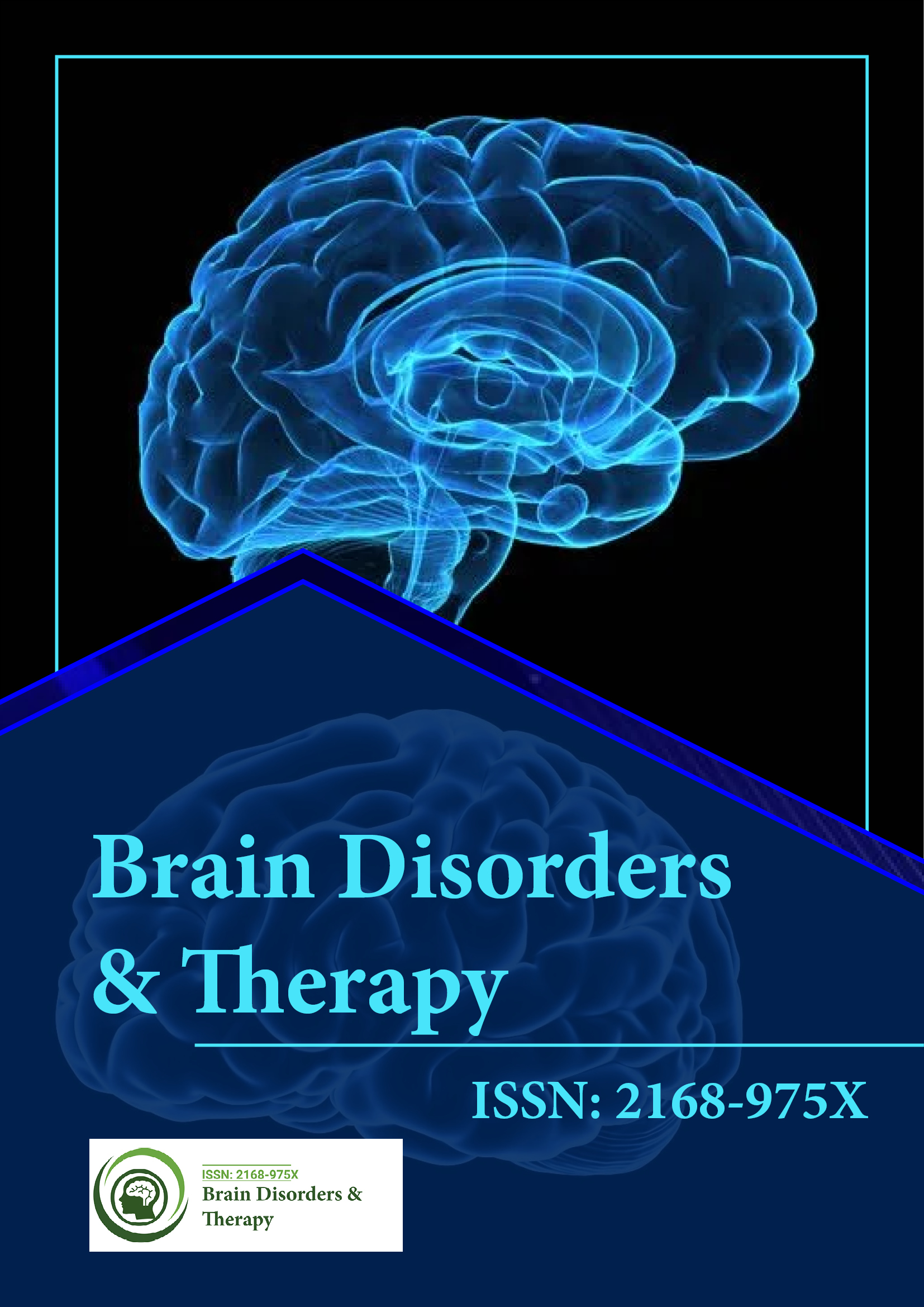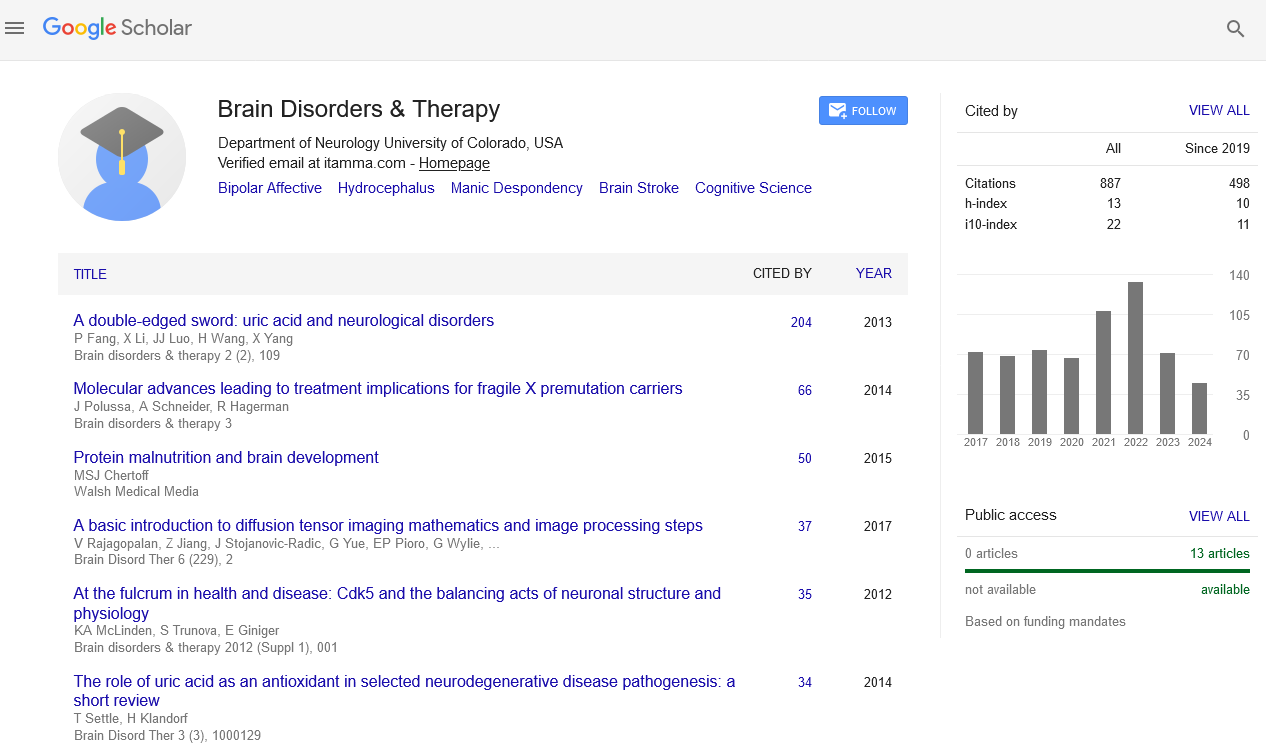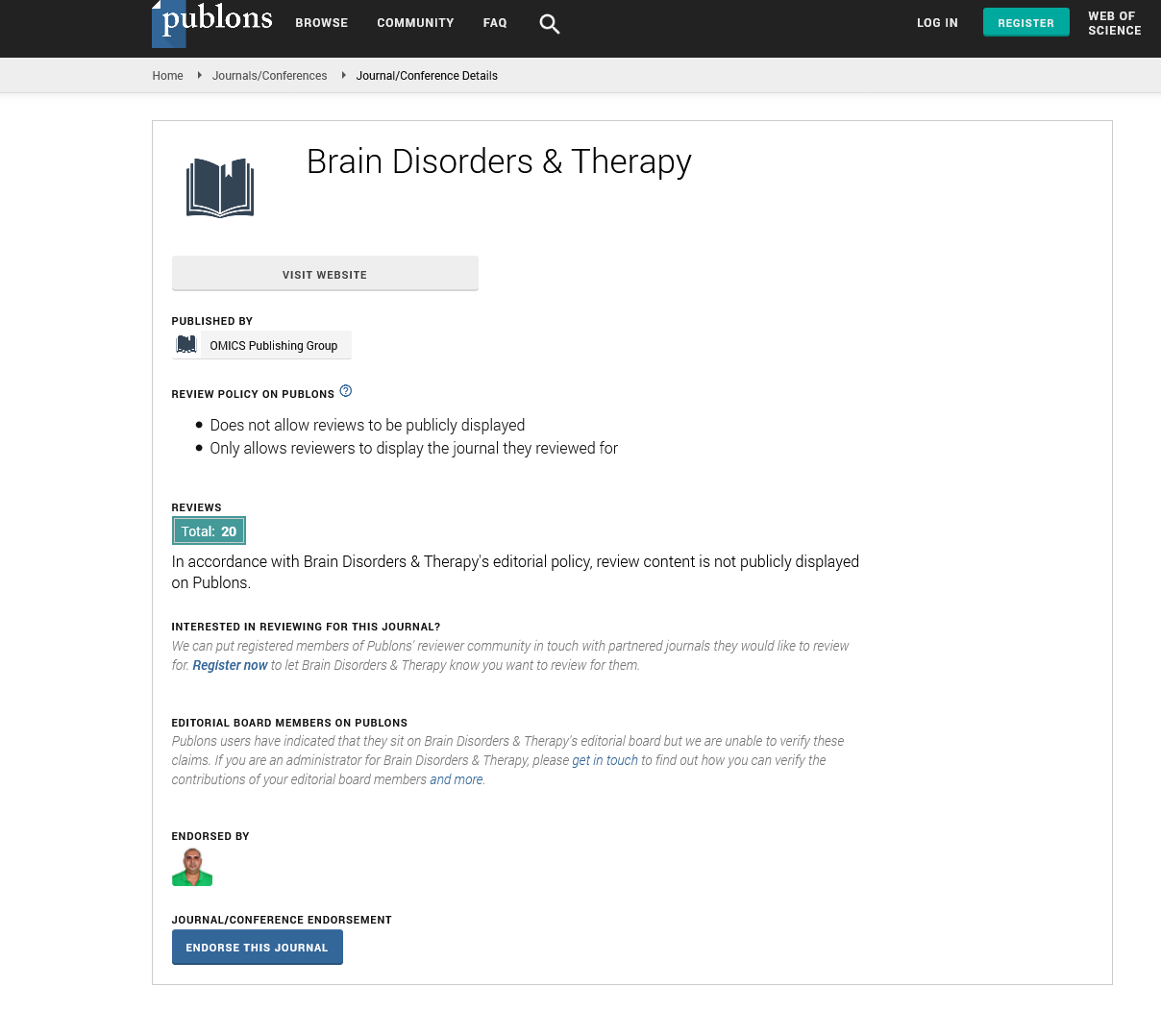Indexed In
- Open J Gate
- Genamics JournalSeek
- JournalTOCs
- RefSeek
- Hamdard University
- EBSCO A-Z
- OCLC- WorldCat
- Publons
- Geneva Foundation for Medical Education and Research
Useful Links
Share This Page
Journal Flyer

Open Access Journals
- Agri and Aquaculture
- Biochemistry
- Bioinformatics & Systems Biology
- Business & Management
- Chemistry
- Clinical Sciences
- Engineering
- Food & Nutrition
- General Science
- Genetics & Molecular Biology
- Immunology & Microbiology
- Medical Sciences
- Neuroscience & Psychology
- Nursing & Health Care
- Pharmaceutical Sciences
Home sleep apnea testing in children: A prospective pilot study
Joint Event on 3rd International Conference on Neuropsychiatry and Sleep Medicine & 8th International Conference on Neurology and Brain Disorders
September 21-22, 2018 | Philadelphia, USA
Amee A Patel, Jason Vecchio, Danielle Guffey, Charles G Minard and Daniel G Glaze
Baylor College of Medicine; USA
Posters & Accepted Abstracts: Brain Disord Ther
Abstract:
Introduction: There are limited availability and restricted access to pediatric attended laboratory polysomnography (PSG) resulting in delays in treatment. There is growing evidence that Home Sleep Apnea Test (HSAT) can successfully be used to identify adults with moderate to severe OSA; however, there are limited studies validating the accuracy and utility of HSAT compared to PSG in children. The purpose of this study was to compare the gold standard, PSG to HSAT and to determine the sensitivity and specificity of HSAT in efforts to identify children with moderate to severe OSA. The study was approved by the Baylor College of Medicine Institutional Review Board. Methods: Inclusion criteria included the following: children aged 4-18 years who underwent sleep clinic evaluation and overnight polysomnography (PSG). Exclusion criteria inclusion included the following children who had prior tonsilloadenoidectomy, previous diagnosis of OSA, use of PAP therapy, the presence of complex medical problems and/or other sleep disorders, and less than 4 hours (240 minutes) of HSAT recording time. On the first night, subjects were set up by a sleep technologist with the CareFusion NOX T3 ambulatory device and then sent home. On the next consecutive night, subjects were then evaluated with a PSG. Subjects were recruited from Texas Children???s Hospital/Children???s Sleep Center. Both HSAT and PSG were scored by a board-certified sleep specialist. AASM pediatric scoring rules were used for the PSG but modified the HSAT adult algorithm but scoring events of 2 breaths or more. Fifty-three subjects were enrolled. Eight (15%) subjects were excluded due to equipment malfunction/incomplete HSAT recording time, 4 (7%) did not complete the two nights of the study, 3 (6%) canceled due to the hurricane. Therefore, 38 (72%) subjects completed both HSAT and PSG. Results: We found a cutoff value of HSAT oAHI>=0.8 had a sensitivity of 62.5% and specificity of 71.43% in those with PSG oAHI of >=5. For a cutoff of HSAT oAHI>=0.9, the sensitivity was 71.43% and specificity was 95.83% for identifying those with PSG oAHI of >=10. For a cutoff of HSAT oAHI>=3.1 the sensitivity was 87.50% and specificity was 86.67% for identifying those with PSG oAHI of >=20. Conclusion: This prospective, pilot study suggests that HSAT may be utilized in clinical practice in children with non-complex medical history who have a high probability of moderate to severe OSA. We found that HSAT OAHI value ??? 0.9 is predictive of a PSG OAHI ??? 10 and HSAT OAHI value ??? 3.1 is predictive of a PSG OAHI ??? 20 both with a high sensitivity and specificity. Future direction includes a larger sample size as including well non-obese and obese children.
Biography :
E-mail: axpatel1@texaschildrens.org


